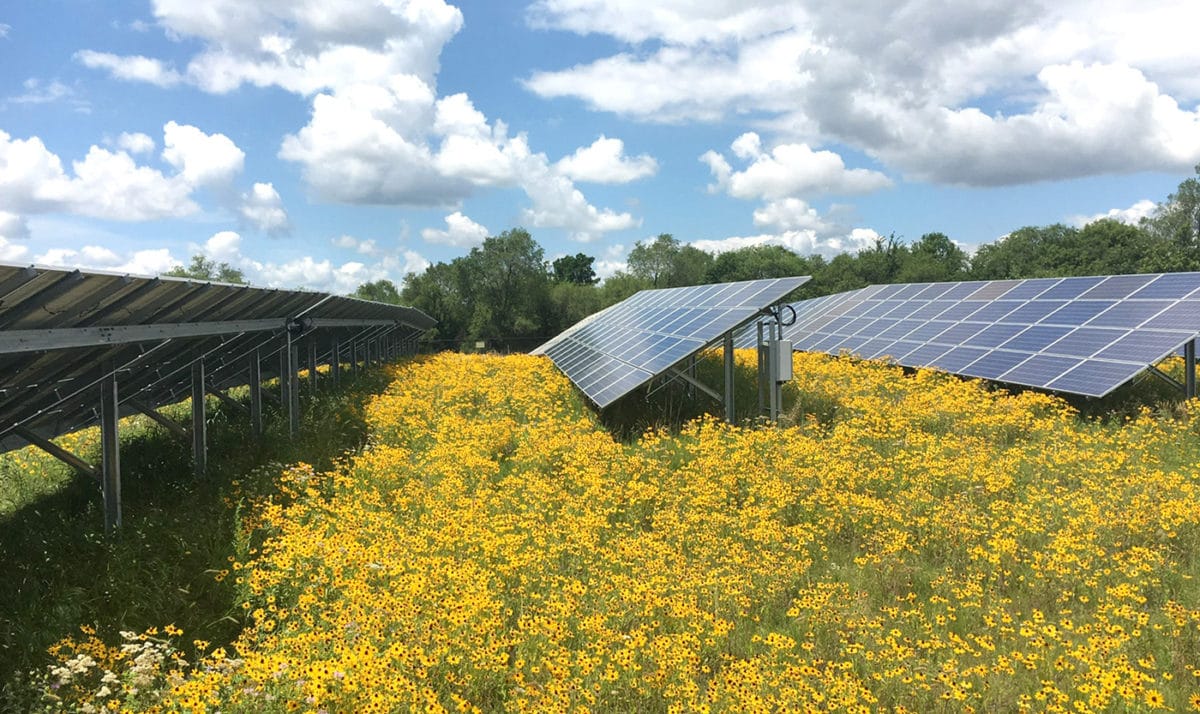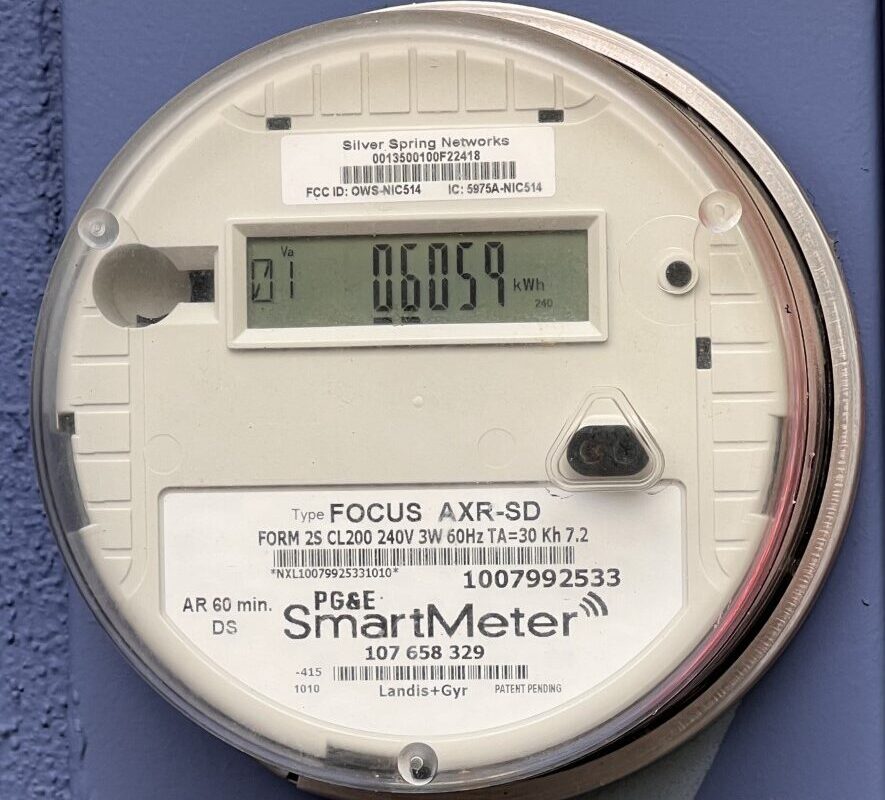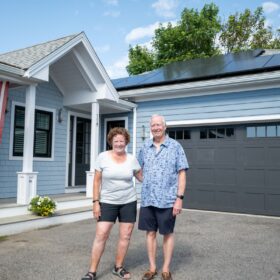The U.S. Department of Energy (DOE) announced the Foundational Agrivoltaic Research for Megawatt Scale (FARMS) funding, which has allocated $8 million for six solar energy research projects across six states and the District of Columbia. The projects are intended to provide new economic opportunities for farmers, rural communities, and the solar industry. The funding supports agrivoltaics, defined as the co-location of solar energy generation and agricultural production, which can include traditional crops as well as livestock grazing and pollinator gardens.
“DOE’s research into agrivoltaics provides an incredible opportunity to pair solar energy generation with safe and robust crop production—ensuring rural communities reap the full economic benefits of a clean energy future,” said Jennifer M. Granholm, U.S. Secretary of Energy. “With these exciting projects, we’re supporting sustainable agriculture and investing in the technologies that enable us to make our climate goals a reality—a win-win for our planet and hardworking farmers coast to coast.”
In the U.S., less than 2% of solar energy projects are co-located with crops or pollinator habitats. NREL’s main research project on agrivoltaics, called Innovative Solar Practices Integrated with Rural Economies and Ecosystems (InSPIRE), developed a financial calculator to quantify the benefits of the practice. It also developed a list of best practices for those interested in entering the field. Additionally, InSPIRE tracks all the active agrivoltaics site across the U.S., which can be found here. The FARMS funding program goes a step further by seeking to develop replicable models for agrivoltaics that can provide new economic opportunities while potentially reducing land-use conflicts. DOE also wants to make agrivoltaic projects lower cost and easier to adopt, thus maximizing benefits for farmers, rural communities, and the solar industry.
The projects will examine multiple configurations of solar system design, crops and cultivation methods, and soil and environmental conditions. Researchers will work with agricultural extensions and develop resources to spread the best practices to farmers and communities.
- Iowa State University (Ames, Iowa): This project will study horticulture and beekeeping at solar sites, produce decision support tools, and provide agrivoltaics training programs for farmers and other stakeholders. (Award Amount: $1.6 million)
- Rutgers University (Piscataway, N.J.): This project team will conduct crop and grazing trials at two solar array testbeds, study community perceptions of agrivoltaics, and create a regional agrivoltaics network for agricultural extension staff in the Northeast, beginning with their partnership with Delaware State University, a historically black land-grant university. (Award Amount: $1.6 million)
- Solar and Storage Industries Institute (Washington, D.C.): This project team will partner with the agriculture and utility sectors to identify barriers to implementing agrivoltaics and produce case studies and guides for solar developers, farmers, and decision-makers. (Award Amount: $500,000)
- The Ohio State University (Columbus, Ohio): This project will conduct grazing and hay production trials using precision agriculture technologies and study the impacts on soil health at an operating utility-scale solar site. (Award Amount: $1.8 million)
- University of Alaska Fairbanks (Fairbanks, Alaska): This project will research agrivoltaics specifically adapted to the food and energy needs of high-latitude underserved communities. (Award Amount: $1.3 million)
- University of Arizona (Tucson, Ariz.): This research will pilot grazing and climate-smart agriculture under a traditional utility-scale solar site to maximize energy, food, and water benefits in the arid Southwest. (Award Amount: $1.2 million)
The Solar and Storage Industries Institute (S12) project intends to reduce deployment barriers for large-scale agrivoltaic projects and maximize benefits for farmers, solar firms and utility cooperatives.
“Co-locating solar and farms has the potential to remedy some of the recent land issues that have threatened to undermine widespread clean energy deployment,” said David Gahl, executive director of SI2. “At the moment, agrivoltaics is a nascent market, but with the right resources and guidance this new market could take off. This project will provide a strong foundation for the growth of agrivoltaics, and we look forward to working with the Department of Energy on this important work.”
S12’s project will feature a partnership between the American Farm Bureau Federation, the National Rural Electric Cooperatives Association and the Solar Energy Industries Association (SEIA). This project will examine the economic and legal issues that solar developers and farm operations must understand to make responsible investments in agrivoltaics. Partners will then produce case studies and best practices guides for solar developers, farmers and decision makers.
By selecting awardees such as S12, which have large extension networks, DOE aims to enable more collaboration among farmers, rural communities, and the solar industry.
The six projects will conduct outreach to and engage with regional rural and farming communities, including Hispanic, Tribal, and immigrant farmers. These investments will advance diversity, equity, and inclusion, supporting President Biden’s Justice40 Initiative, which is an effort to ensure that Federal agencies work with states and local communities to make good on President Biden’s promise that at least 40% of the overall benefits from Federal investments in climate and clean energy go to disadvantaged communities. DOE support for these projects support President Biden’s goals to decarbonize the electricity sector by 2035 and achieve a net-zero emissions economy by 2050.
DOE analysis estimates that the United States will need to quadruple the amount of solar energy installed per year by 2030 to achieve the Biden-Harris Administration’s goal of a 100% clean economy by 2050.
This content is protected by copyright and may not be reused. If you want to cooperate with us and would like to reuse some of our content, please contact: editors@pv-magazine.com.









I’d like to participate in this implementation of the Mayor planta de energia solar Arábia Saudi – 2060MW